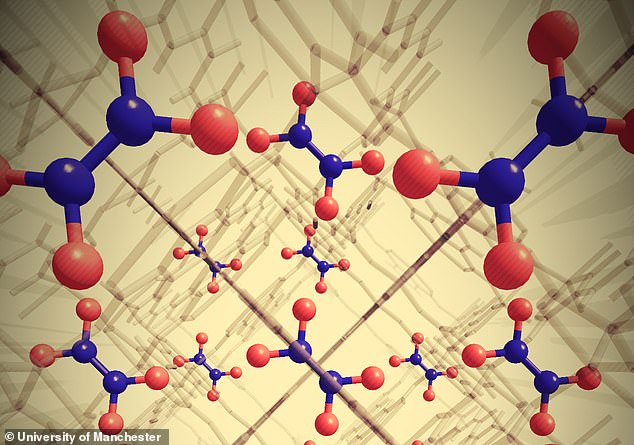Breakthrough technology turns seawater into clean drinking water in less than 30 minutes using the power of sunlight
- New technology purifies water using sunlight using a metal-organic framework
- These so-called MOFs separate the salty solute found in brackish and seawater
- The concept could provide potable water for millions of people across the world
New technology turns seawater into drinking water into clean drinking water in less than 30 minutes using the power of sunlight.
Australia-based researchers used a metal-organic framework (MOF), a type of lattice-like crystal, to desalinate water with sunlight.
Their hollow framework of pores separate the salty solute that’s within the liquid brackish water or seawater, in a process known as molecular sieving.
The MOF was used to filter harmful particles from water and generate 139.5 litres of clean water per kilogram of MOF per day.
Scientists say their technology is more energy-efficient manner than current desalination practices, including reverse osmosis, and could provide potable water for millions globally.
Metal-organic frameworks are a class of compounds consisting of metal ions that form a crystalline material with the largest surface area of any material known
Water scarcity is one of the largest global risks in the upcoming years, according to the World Economic Forum (WEF).
‘Sunlight is the most abundant and renewable source of energy on Earth,’ said Professor Huanting Wang from the Department of Chemical Engineering at Monash University in Australia.
‘Our development of a new adsorbent-based desalination process through the use of sunlight for regeneration provides an energy-efficient and environmentally-sustainable solution for desalination.’
Desalination, the process of turning undrinkable saline or salty water into drinkable water, has been used to address escalating water shortages globally.
‘Due to the availability of brackish water and seawater, and because desalination processes are reliable, treated water can be integrated within existing aquatic systems with minimal health risks,’ Professor Wang said.
The World Health Organisation suggests good quality drinking water should have a total dissolved solid (TDS) of less than 600 parts per million (ppm).
Monash researchers were able to achieve a TDS of less than 500 ppm in just 30 minutes and regenerate the MOF for reuse in four minutes under sunlight.
MOFs were discovered in the 1990s and could have potential for use in hydrogen storage, solar energy and even mopping up toxic gasses from the air.
They are a class of compounds consisting of metal ions that form a crystalline material with the largest surface area of any material known.
They are so porous that they can fit the entire surface of a football field in a teaspoon.
The research team created a dedicated MOF called PSP-MIL-53.
This was synthesised by introducing poly(spiropyran acrylate) (PSP) into the pores of MIL-53 – a specialised MOF well-known for its breathing effects and transitions upon the adsorption of molecules such as water and carbon dioxide.
PSP-MIL-53 was able to yield 139.5 litres of fresh water per kilogram of MOF per day, with a low energy consumption, sourced from a river, lake or aquifer.
‘This study has successfully demonstrated that the photoresponsive MOFs are a promising, energy-efficient, and sustainable adsorbent for desalination,’ Professor Wang said.
‘Our work provides an exciting new route for the design of functional materials for using solar energy to reduce the energy demand and improve the sustainability of water desalination.
‘These sunlight-responsive MOFs can potentially be further functionalised for low-energy and environmentally-friendly means of extracting minerals for sustainable mining and other related applications.’
Thermal desalination processes by evaporation are usually energy-intensive, while other technologies like reverse osmosis, has a number of drawbacks,
In reverse osmosis, water, containing dissolved salt molecules, is forced through a semi-permiable membrane filter.
Larger salt molecules do not get through the membrane holes, but the smaller water molecules do.
Reverse osmosis is an effective means to desalinate saline water, but it is more expensive than other methods and has high energy consumption.
The research has been published in the journal Nature Sustainability.
